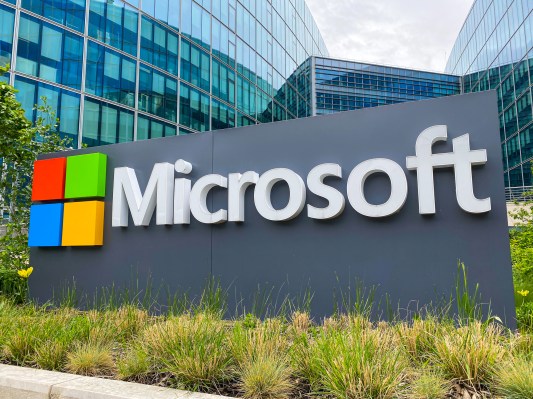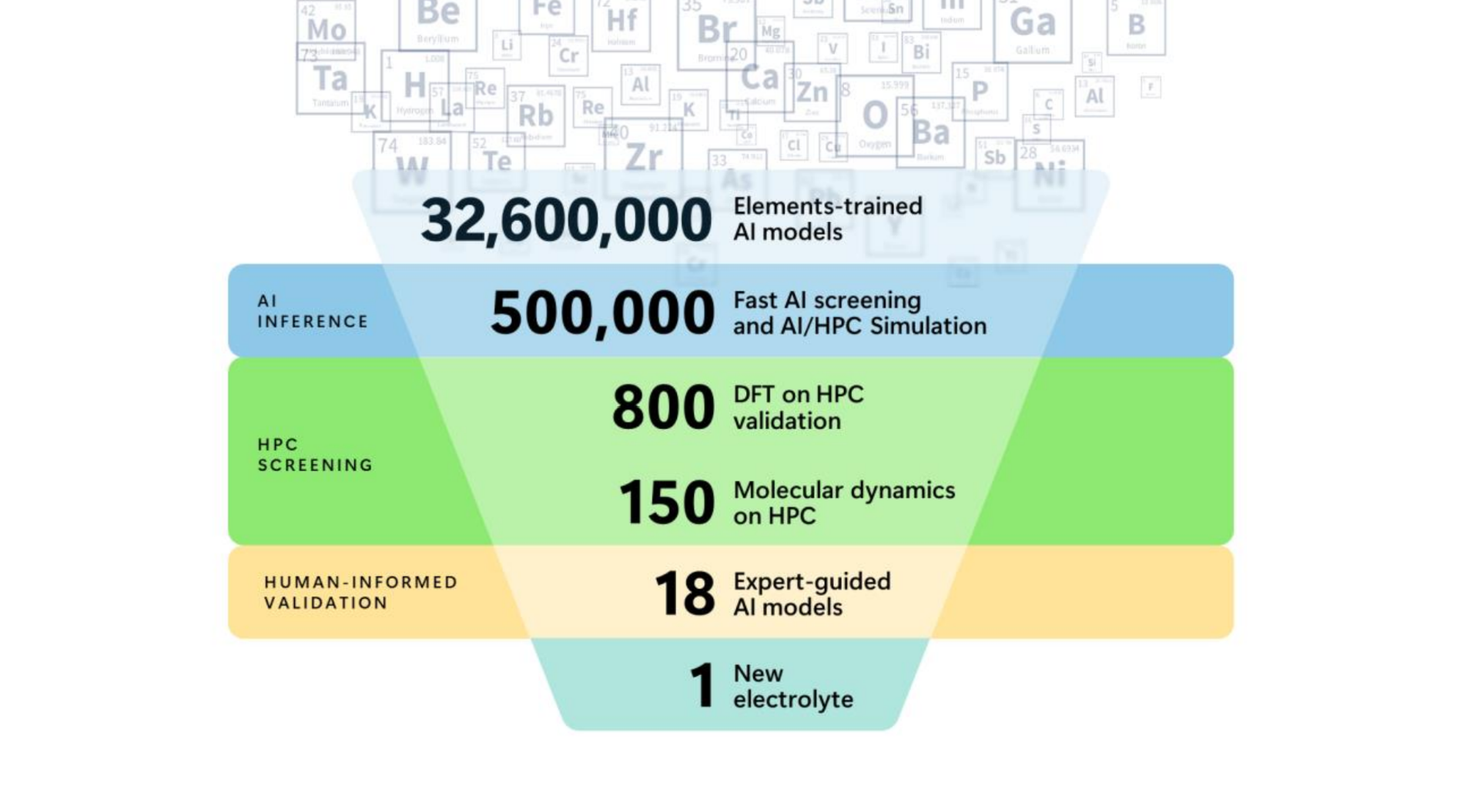Microsoft today announced that it has worked with the U.S. Department of Energy’s Pacific Northwest National Laboratory (PNNL) to use its Azure Quantum Elements service to whittle down millions of potential new battery materials to only a few — with one of them now in the prototype stage.
Now, before you get too excited about the “quantum” part of “Azure Quantum Elements” (and why wouldn’t you — it’s in the name, after all), let’s get this out of the way first: No quantum computer was used in this project. Azure Quantum Elements, which launched last summer, combines AI and traditional high-performance computing (HPC) techniques into what is essentially a workbench for scientific computing, with the promise of providing access to Microsoft’s quantum supercomputer in the future. So even though no qubits were involved in this current project, the overall idea here is to bring all of these technologies together over time.
Krysta Svore, who leads Microsoft Quantum, told me that the overall idea here was to see how far the team could push what is currently available in Azure Quantum Elements (AQE) — and especially the AI accelerator — to advance materials discovery. Using AQE, the researchers at PNNL looked at 32 million inorganic materials to arrive at 18 candidates for their battery project. First, the teams used AQE’s AI models to whittle down the pool to about 500,000 candidates. After that, the researchers used existing HPC techniques to identify those 18 promising candidates to focus on. Typically, it would take years to go through this process and to build a prototype battery. Using AQE, the researchers were able to do this in 18 months.
“The intersection of AI, cloud and high-performance computing, along with human scientists, we believe is key to accelerating the path to meaningful scientific results,” said Tony Peurrung, PNNL deputy director for Science and Technology. “Our collaboration with Microsoft is about making AI accessible to scientists. We see the potential for AI to surface a material or an approach that is unexpected or unconventional, yet worth investigating. This is a first step in what promises to be an interesting journey to accelerate the pace of scientific discovery.”
Many quantum computing boosters expect that their machines will excel at solving chemistry and material science problems. And while the quantum computing community continues to push the state of the art ahead at a steady pace, we’re still at least a few years away from seeing a quantum computer that is actually useful. We’re currently still in the noisy intermediate-scale quantum (NISQ) era, after all. Svore, unsurprisingly, remains optimistic that Microsoft will be able to deliver on its plan to build a quantum supercomputer that uses its Majorana-based qubits, within the next decade.
For now, though, even though there is obviously real science involved, it’s hard not to look at this as a bit of a PR exercise, given how far we are still from bringing quantum computing into the process.

